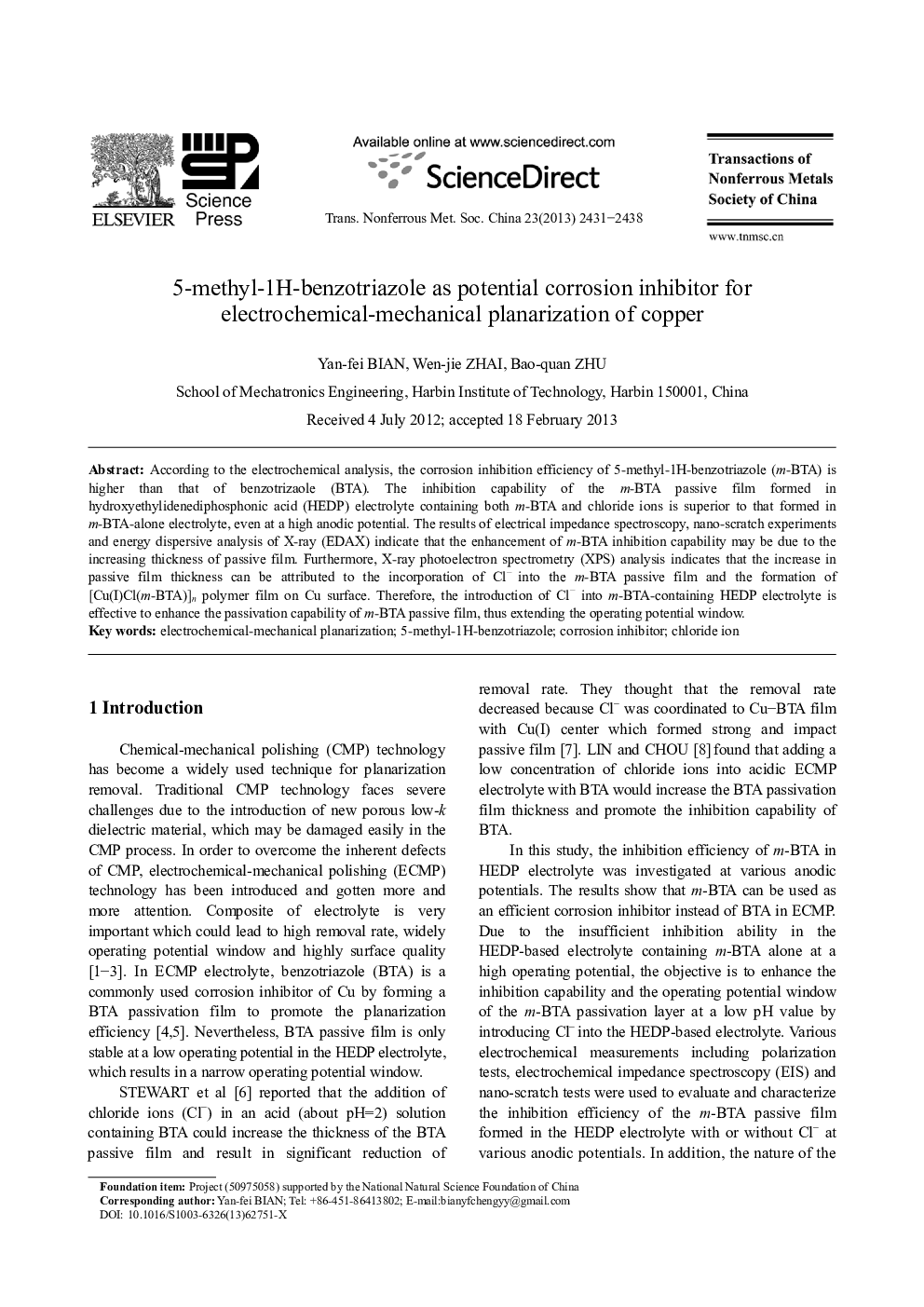| Article ID | Journal | Published Year | Pages | File Type |
|---|---|---|---|---|
| 1636455 | Transactions of Nonferrous Metals Society of China | 2013 | 8 Pages |
Abstract
According to the electrochemical analysis, the corrosion inhibition efficiency of 5-methyl-1H-benzotriazole (m-BTA) is higher than that of benzotrizaole (BTA). The inhibition capability of the m-BTA passive film formed in hydroxyethylidenediphosphonic acid (HEDP) electrolyte containing both m-BTA and chloride ions is superior to that formed in m-BTA-alone electrolyte, even at a high anodic potential. The results of electrical impedance spectroscopy, nano-scratch experiments and energy dispersive analysis of X-ray (EDAX) indicate that the enhancement of m-BTA inhibition capability may be due to the increasing thickness of passive film. Furthermore, X-ray photoelectron spectrometry (XPS) analysis indicates that the increase in passive film thickness can be attributed to the incorporation of Clâ into the m-BTA passive film and the formation of [Cu(I)Cl(m-BTA)]n polymer film on Cu surface. Therefore, the introduction of Clâ into m-BTA-containing HEDP electrolyte is effective to enhance the passivation capability of m-BTA passive film, thus extending the operating potential window.
Keywords
Related Topics
Physical Sciences and Engineering
Materials Science
Metals and Alloys
Authors
Yan-fei BIAN, Wen-jie ZHAI, Bao-quan ZHU,
